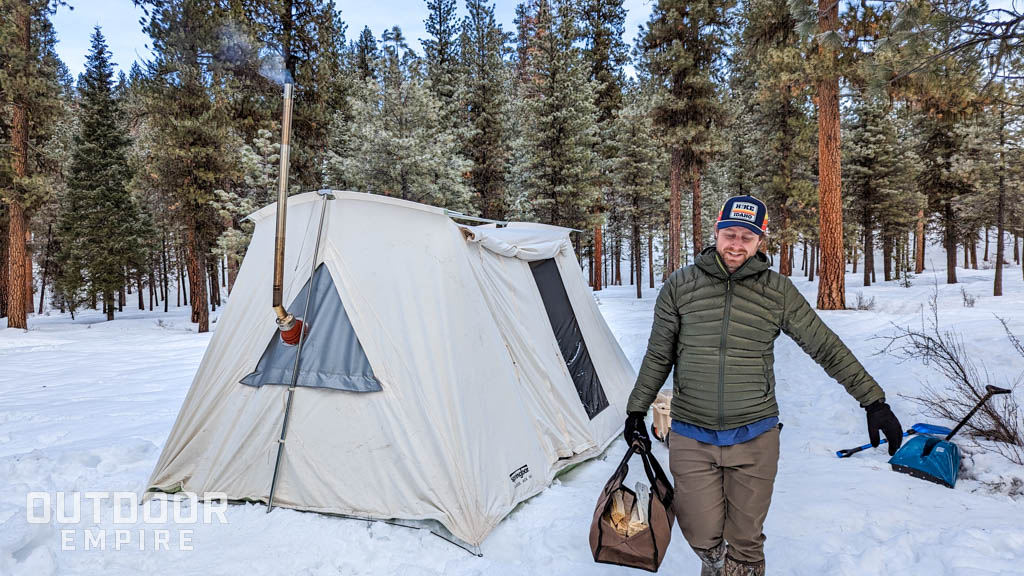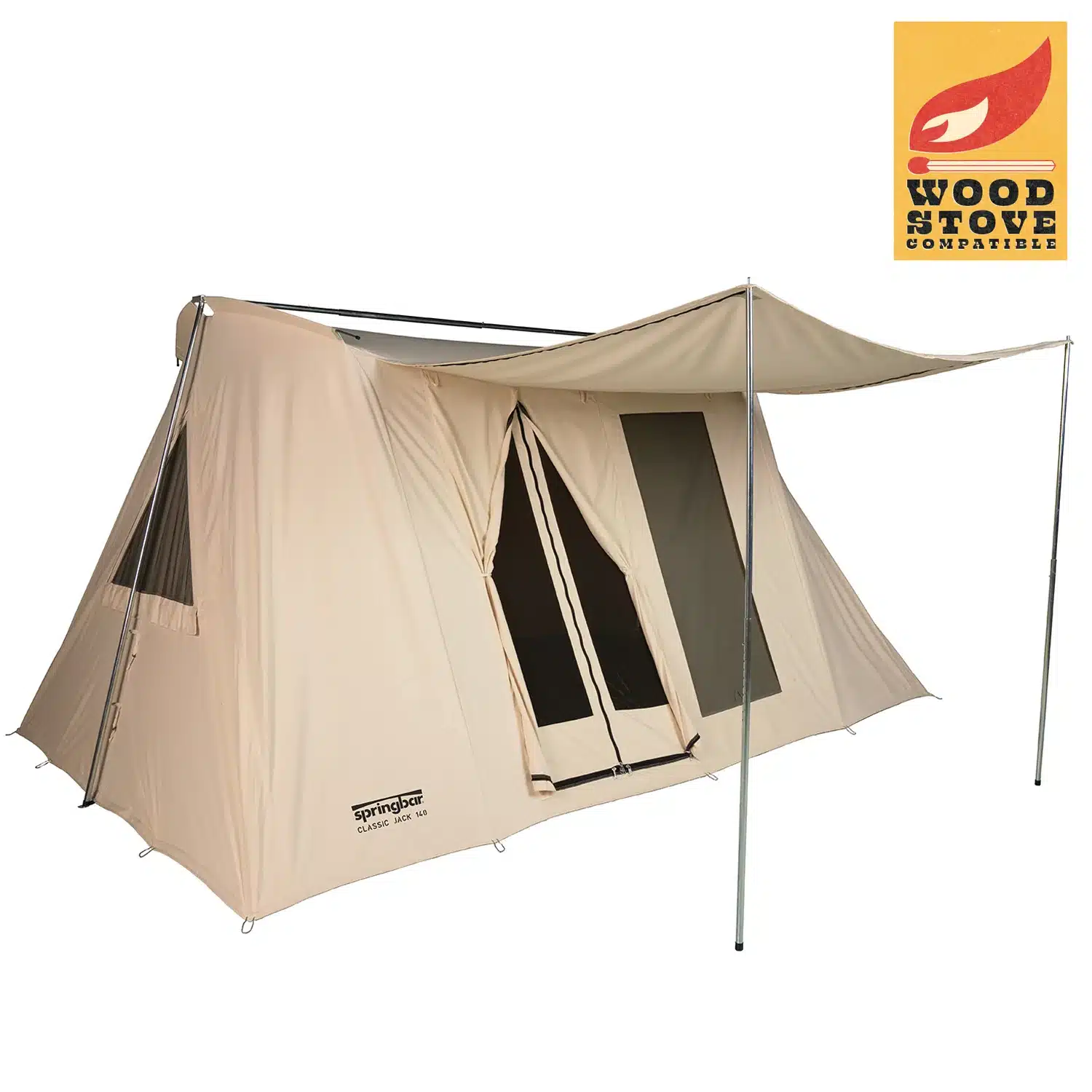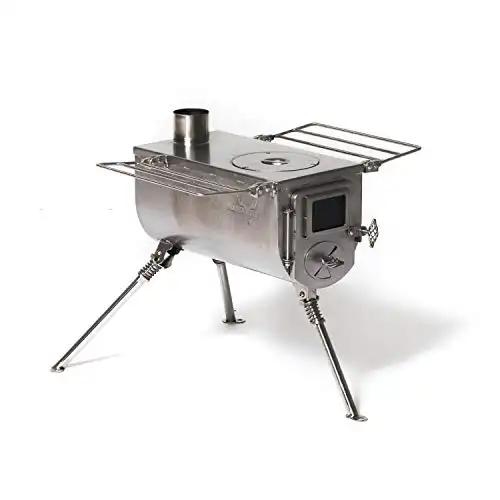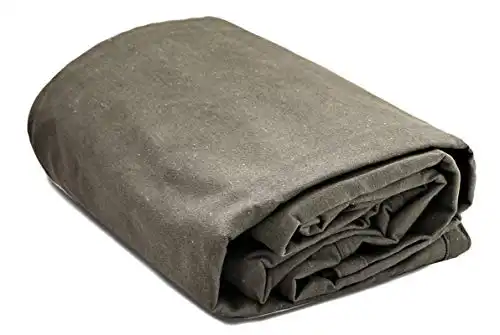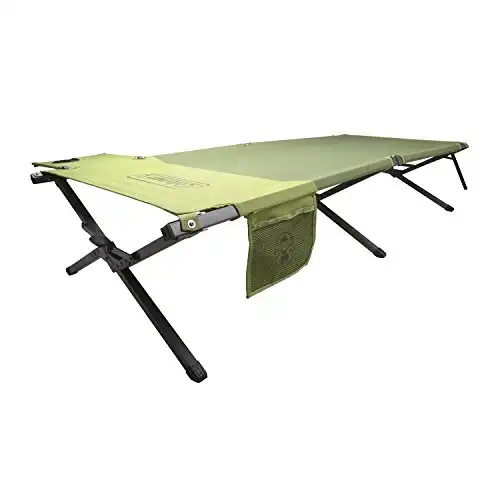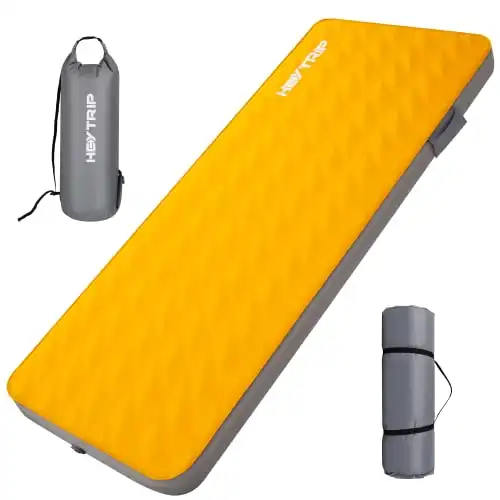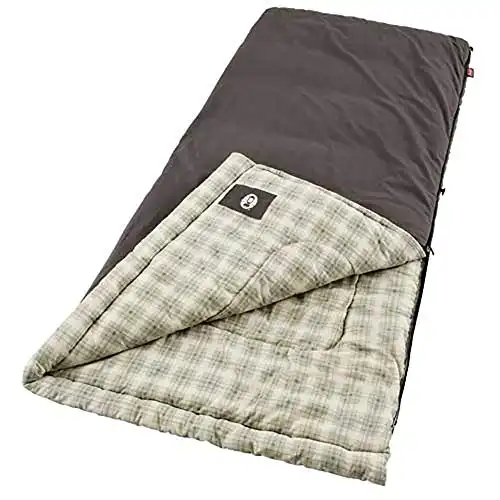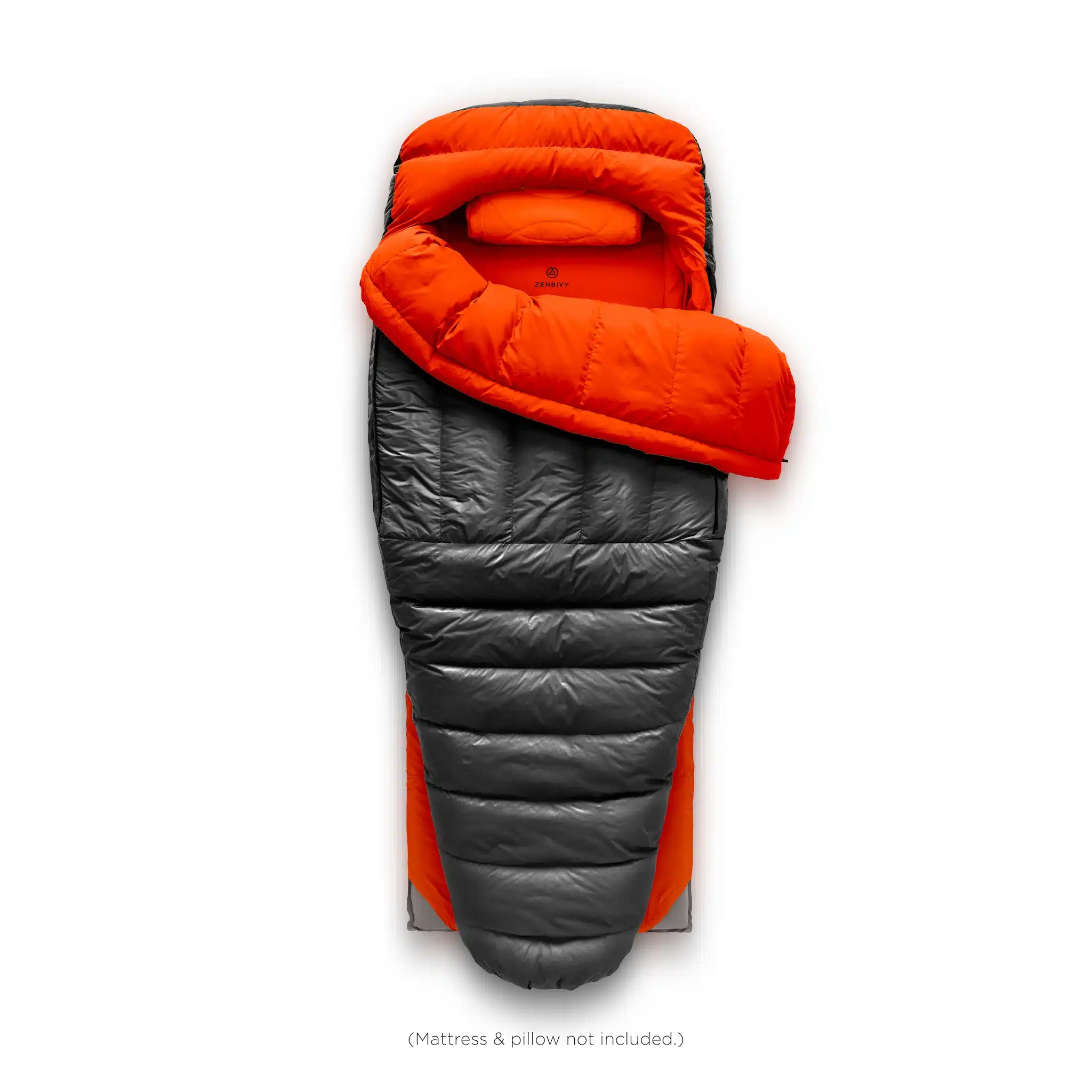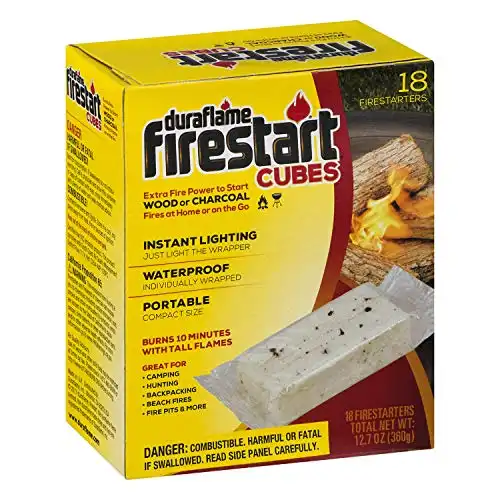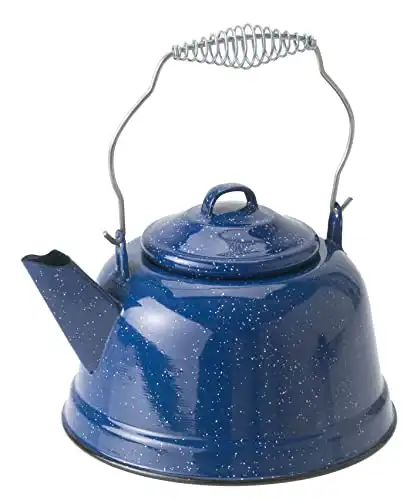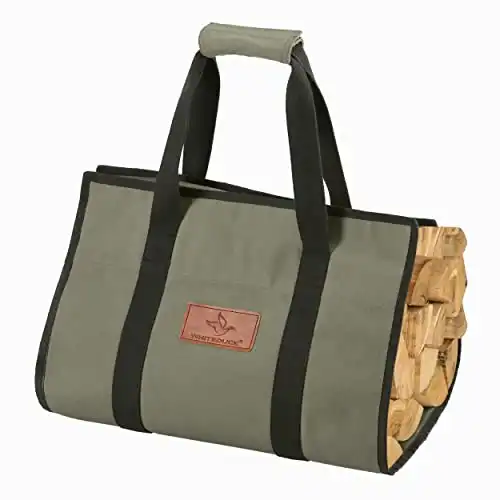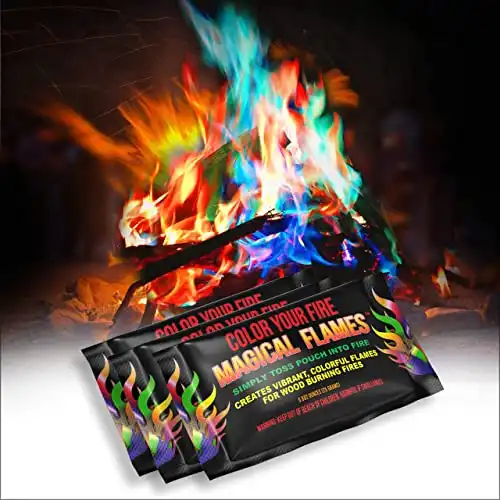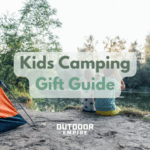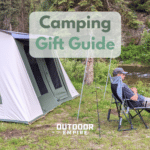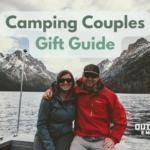Camping in cold weather can seem intimidating at first. The thought of freezing your butt off while being wet and miserable isn’t exactly alluring. However, with the right cold weather camping gear, winter camping is a true delight.
Unlike camping in the heat of summer, cold weather camping offers some pleasant surprises. No bugs, fewer people, and more peace and quiet, to name a few.
In the summer, you are limited in what you can do to control your body temperature because you can only strip off so many layers. And you can’t exactly air condition your tent or the great outdoors to be more comfortable. But in winter, you can always do things to manage your body temperature by adding layers of the right clothing, beefing up your sleeping bag, or heating your tent.
I found some of the best winter camping gear I’ve ever known this year. With the right wood stove, hot tent, and sleeping system, camping in the cold, snowy winter is one of my favorite ways to experience nature.
DISCLOSURE: As an Amazon Associate I earn from qualifying purchases. Links in this article are affiliate links. If you click on a link we may earn a commission if you make a purchase, at no additional cost to you.
The Best Cold Weather Camping Gear of 2023
Rather watch than read? Check out our YouTube video on the topic!
This is the best gear for camping in cold temperatures, winter, and snow:
- Hot Tent: Springbar Classic Jack 140
- Wood Stove: Winnerwell Woodlander Medium
- Canvas Tarp: White Duck 18 oz Cotton Canvas Tarp
- Cot: Coleman Trailhead Easy Step
- Sleeping Pad: HeyTrip 4″ Self-inflating Foam
- Sleeping Bag: Coleman Heritage Flannel
- Down Quilt: ZenBivy Bed 25°
- Fire Starters: Duraflame Firestart Cubes
- Kettle: GSI Outdoors Enamel Tea Kettle
- Firewood Carrier: White Duck Tote Log Carrier
- Just For Fun: Party Flames
Obviously this list doesn’t include the clothing and other camping gear you’ll need, but it covers the most important items you’ll specifically need for cold weather camping.
Why Trust Us?
I have personally spent countless hours researching and testing camping gear that makes cold weather camping comfortable. I own every piece of gear on this list and have used it for multiple nights in the woods in all kinds of weather including deep snow and below zero temperatures.

This gear is not just a bunch of fancy brand names. While there are certainly many other great products from reputable outdoor brands and retailers, many of those products cost an arm and a leg. I have used much of that gear as well in my testing, but in many cases found less expensive alternatives that were just as good or nearly so.
The products that I recommend in this article are all reasonably priced, high quality, and easy to purchase either online or at a local retail store.
1. Canvas Hot Tent
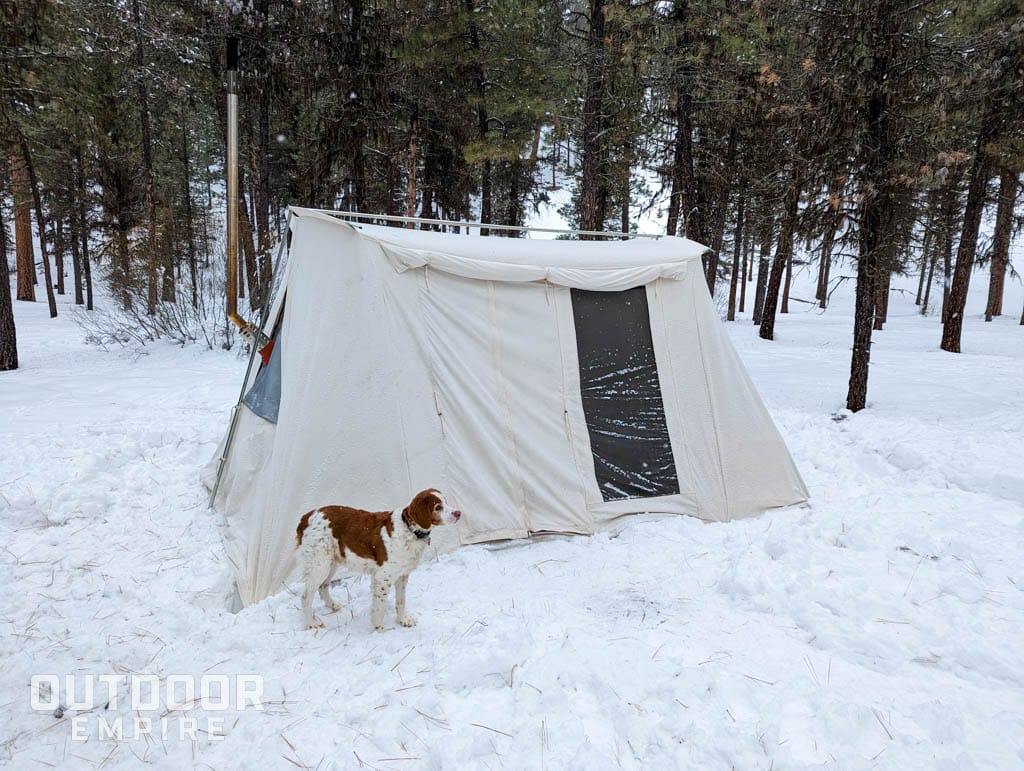
The first essential piece of gear you’ll need to camp in cold weather is a four-season tent. If you’re car camping and have the space, canvas is the best material for winter camping because of it’s ability to regulate temperature so well. The Springbar Classic Jack 140 has been my favorite tent over the past year because it fits my family of five comfortably, and it’s so versatile.
The reason it makes such a great tent for camping in the cold is because it is hot tent ready. By this I mean that it is wood stove compatible without having to jerry rig a crude DIY solution. You can purchase the Springbar ready hot tent kit from Winnerwell which includes all the components you need to add a wood stove.
While many canvas tents like the popular Kodiak Flex-Bow could potentially be used with a wood stove, that requires you to manually cut a hole in the canvas roof and insert a homemade or third-party stove jack. This is a bunch of extra work and too risky for my taste. I don’t want to void warranties or have leaks of my own making. The Springbar Classic Jack 140 removes those risks, is super convenient, and works like a charm.
2. Portable Wood Stove
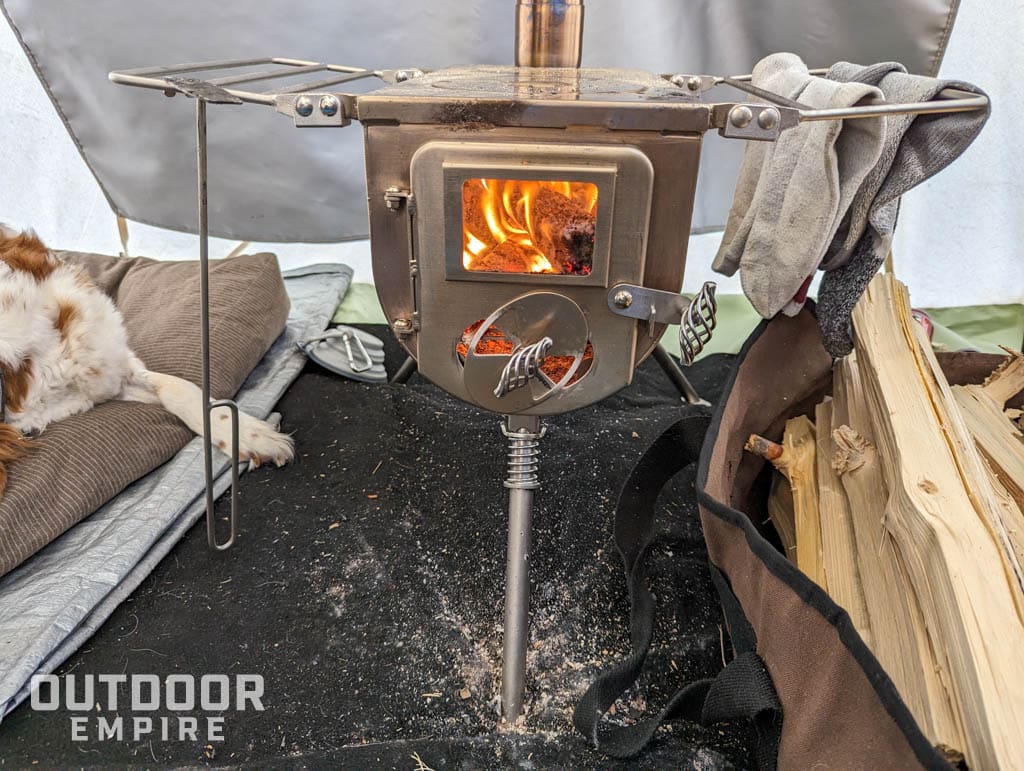
The next obvious piece of gear you’ll need in order to actually have a hot tent is a portable wood stove. The options for these are growing every year, but the Winnerwell Woodlander medium size tent stove is out choice for comfortable hot tent camping in cold temperatures.
- Stainless steel doesn't rust
- Lightweight and compact
- Directly compatible with Springbar tent
- Doesn't fit 16" long firewood
- Only burns for about 60-90 minutes
The best part of this stove is how well it pairs with the Springbar Classic Jack 140 thanks to the complete Springbar Hot Tent Bundle they offer directly on their website. There doesn’t really exist another such collaboration between a hot tent and a tent stove company, and it just makes it so easy to put together and use time and time again without cutting, sewing, or patching.
This stove is simple and convenient, but there are a couple things that are less ideal. It’s pretty small so it doesn’t burn for much more than an hour which means if you want to keep the fire burning al night, you’ll have to get up several times to add more wood. And it’s not quite 16 inches deep inside, which means a US standard 16-inch cut piece of firewood won’t quite fit inside.
To remedy that you can either plan ahead and cut your pieces smaller, and maybe use some hardwood to extend your burntime. Or you can upgrade to the large size Woodlander or Nomad stove from Winnerwell which will make things even easier.
3. Canvas Tarp
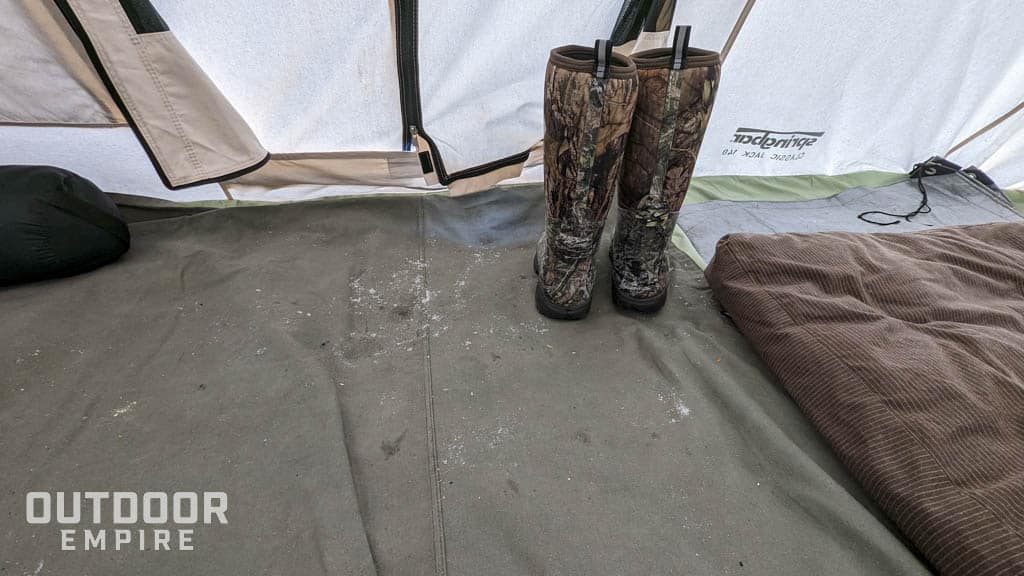
I didn’t know I needed a canvas tarp until I got one. But boy howdy! I love my 18 ounce cotton canvas tarp from White Duck Outdoors, especially for snow camping. It’s now a staple in my car camping kit both in winter and in summer.
- Helps prepare tent pad in snow
- Helps keep tent floor clean
- Waterproof and super durable
- Heavy and bulky
I use this canvas tarp to prepare my tent pad in the snow. I lay it right on the snow where I want to set up my tent, then I lay down and roll back and forth like a steam roller and stomp on it to pack down the snow. My kids think this part is pretty fun. And it helps prevent big pot holes and unlevel ground underneath your tent from sinking your foot in too deep.
I also use it inside the tent as a rug to help protect the vinyl floor of the tent, keep things tidy, and provide an extra layer of insulation. There are dozens of uses for a canvas tarp when camping in cold weather.
4. Camping Cot
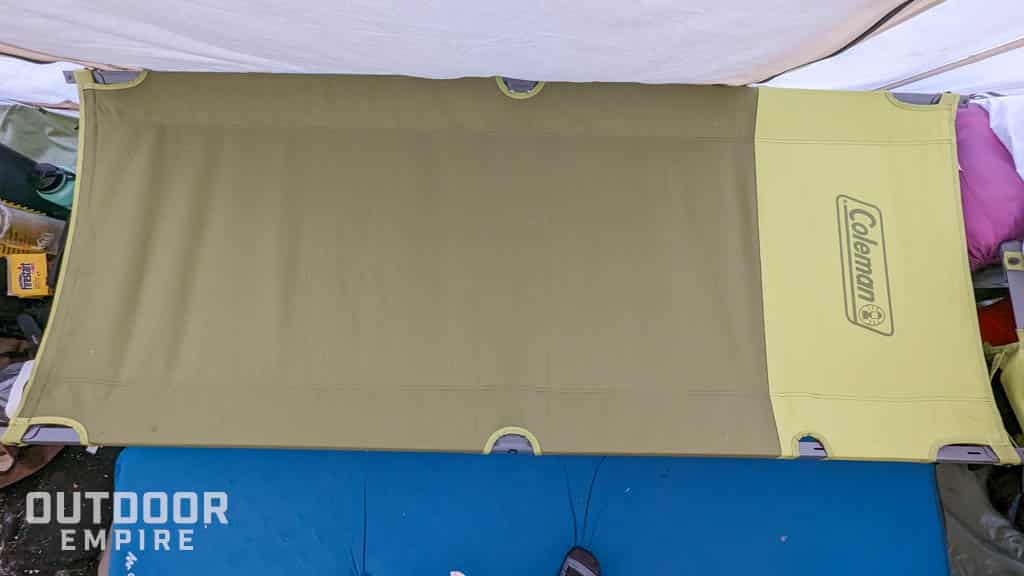
A cot is a smart thing to have in a hot tent because, as you know, heat rises. So instead of sleeping right on the ground, a cot will put you right in the middle of that warm thermal zone inside a hot tent. The Coleman Trailhead Easy Step cot is relatively inexpensive and I find it does trick just fine.
- Relatively inexpensive
- Supports an extra wide long pad
- Has a little side pouch and table
- Annoying to set up (all cots are though)
- Heavy and bulky to transport
Not only do cots help you sleep more soundly by getting you off the cold bumpy ground, but they are also super nice to sit on like a bench. When camping in cold temperatures, and especially in the winter, you are going to spend more time in the tent than in the summertime. Days are shorter and we find ourselves in the tent from sunset to sunrise. The cots make it more comfy to sit and chat, play cards, or eat dinner as a family. Plus they’re great to stow your gear under so you have more floor space to move about.
5. THICK Sleeping Pad

When it comes to a sleeping pad for winter camping you want an R-value of at least 5. This HeyTrip 4-inch foam camping mat has an 9.5 R-value! Plus, the fabric is stretchy and it’s super comfortable.
- Super plush and comfortable
- Oversized with room to roll
- 9.5 R-value means very warm
- Takes a while to self-inflate unassisted
- Not compact when rolled up
I have many nights of sleep on this pad now, including several in below freezing temperatures, and I have never noticed any cold from below. It’s oversized so even as a 6′ 1″ side sleeping tosser-turner, I am comfortable on this camp mat.
It’s a generic version of the very popular, yet expensive, Exped MegaMat. I have slept on both, and I dare say I sleep just as well on this one at a third the price.
I do recommend you pick up a mini USB-rechargeable air pump to inflate this thing faster. It will self-inflate, but it takes a long time, especially when that foam inside is cold in the winter. Plus, those mini air pumps are awesome for stoking your fire in your tent stove!
6. Flannel Sleeping Bag
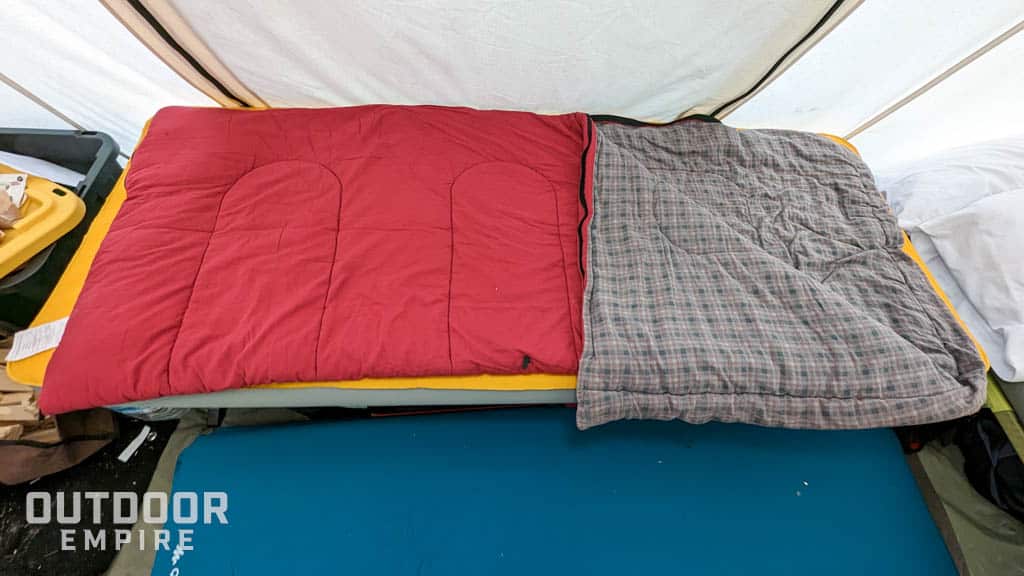
Don’t mind the synthetic-loving naysayers, flannel, canvas, and cotton sleeping bags have their place too. And cold weather winter camping is it. While I’m still using the Coleman flannel sleeping bags my wife and I received as wedding gifts from our college buddies, the Coleman Heritage Big & Tall sleeping bag is even better than my classics.
- Rated for 0°F temps
- Ultra soft and comfortable
- Lots of room to sprawl out
- Inexpensive compared to alternatives
- Big, heavy and bulky
- Hard to dry out, so gotta keep it dry
Cotton and flannel do run the risk of not drying out quickly if wet, but as long as they stay dry during transport, I’ve never had a problem using them in the winter. And boy is it nice to climb into a soft, warm-to-the-touch flannel-lined bag at the end of a cold winter night in a tent. No cold slippery nylon or polyester here, although the outer shell of the Coleman Heritage is polyester which is not a bad thing.
Hunting outfitters and mountain men have used heavy-duty bedrolls for eons, and they’ll keep you warm too. Plus you can sprawl out and take full advantage of the thick pad and cot mentioned above. Unless you want to go backpacking, these bags are worth the weight in winter.
7. Down Quilt
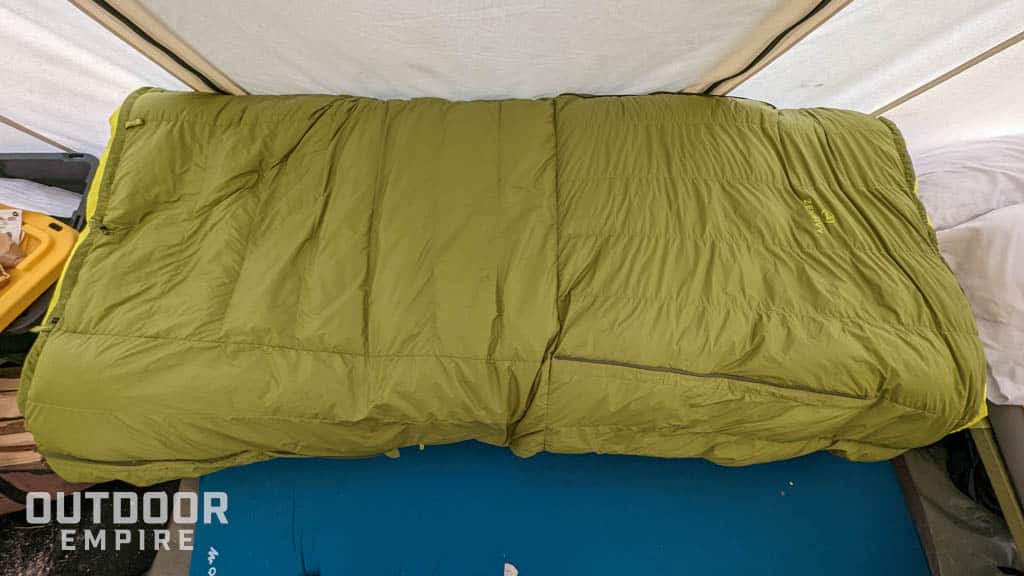
Now here synthetic lovers can rejoice because my next recommendation for the best cold weather camping gear is a down quilt. I love my Zenbivy Bed 25°. These are normally used for backpacking, but even when I am car camping in the winter, this extra layer gives me reassurance that I’ll stay warm even if my fire goes out in my hot tent.
- Lightweight and compact
- Down loft insulates super well
- Can use it for both backpacking and winter camping
- Not cheap
- Synthetic material vulnerable to water and fire
When I camp in cold temperatures, the down quilt completes my four layer sleeping system (cot, pad, sleeping bag, quilt) that will get me through even the coldest of nights. And the quilt doesn’t necessarily need to have a super cold rating if you use it to supplement your main sleeping bag like I do.
I love the fact that I can get more use out of my quilt, not just for summer backpacking trips, but also for snow camping. This helps me justify the price tag as well since its one of the more expensive items on this list.
8. Fire Starters

There are many different types of fire starters at all price points, including super cheap or even free DIY solutions. I found these Duraflame Firestart Cubes at my local supermarket for less than three bucks one day so I nabbed ’em and I loved ’em.
- Inexpensive
- Last plenty long to get the wood burning
- Fast fire starting
- Not the smallest fire starters
- DIY solutions are cheaper or free
Really, any fire starter will do and you’ll be grateful for the convenience they provide in a hot tent, or any cold weather campfire situation. Especially if you have kiddos losing their marbles over cold hands while you try to get the fire going.
9. Camp Kettle
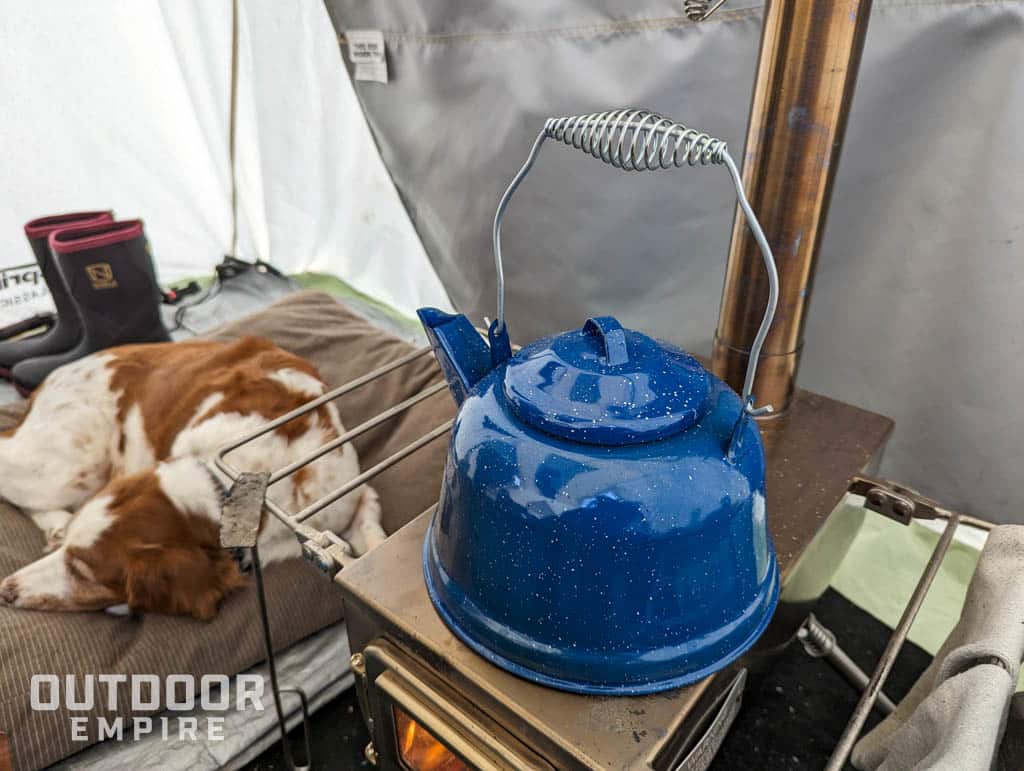
When you have a hot tent, you’ll use a kettle for all kinds of things in the winter. There are fancy ones and coffee percolators, but I think a basic kettle like this blue enamel one from GSI Outdoors is the most versatile.
- Lightweight but durable
- Multi-purpose (see description)
- Simple classic design
- Enamel prone to chipping over time
- Lid sometimes falls off when pouring
I use my kettle not only to boil water for dinner and hot drinks, but also to make “hotties”. Just before bed I take fill up my Nalgene bottle full of near boiling water, put the bottle in a sock, and stick it in my sleeping bag. This will stay warm almost all night and my toes thank me for it.
10. Firewood Tote
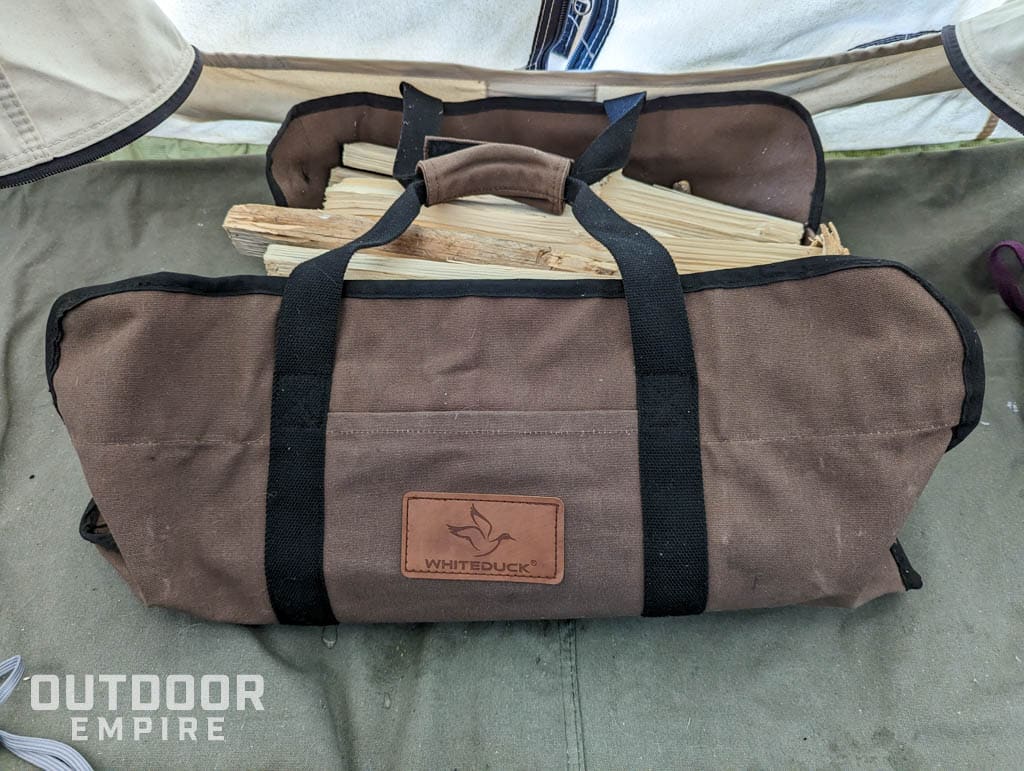
One of the last pieces of gear I like to have for cold weather camping is a firewood carrier. Brand doesn’t really matter here, but I like the White Duck canvas firewood tote that I have.
When it’s cold, and definitely when it’s snowy, you’ll need a fire to stay warm. And I usually don’t count on finding firewood on site when everything is covered in snow, so I bring it from home. That’s when you’ll want something to carry it between your truck and your tent. A tote will make sure it stays dry so you can easily get your fire going, and it keeps things clean in the tent.
11. Party Flames
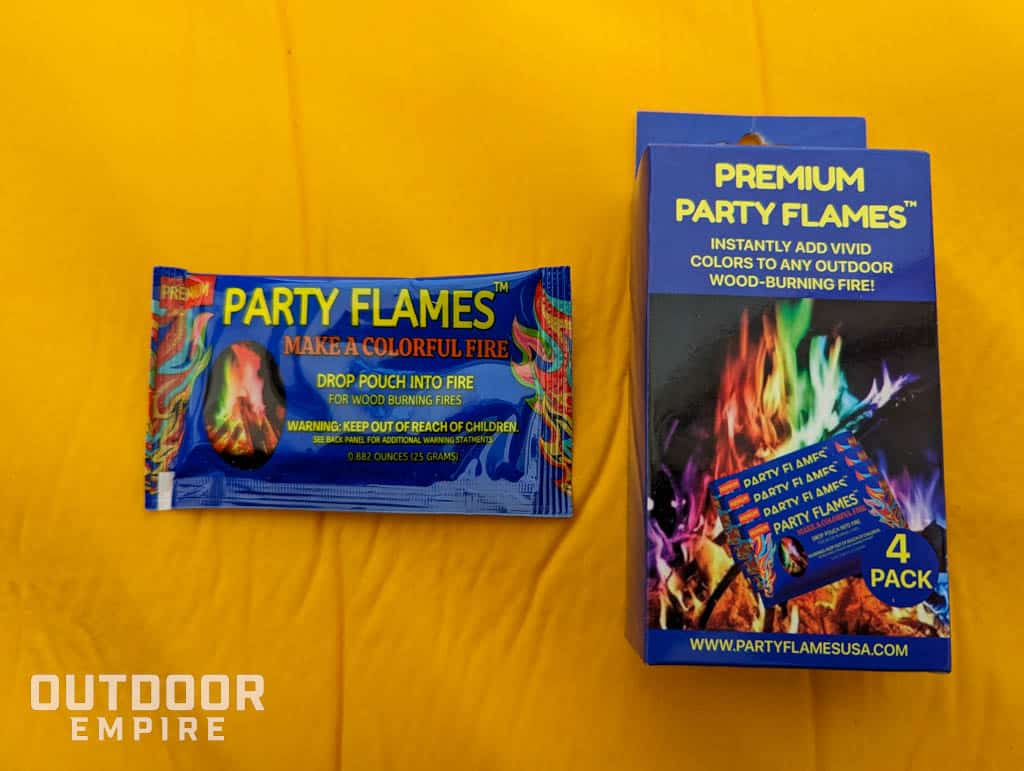
This is the farthest thing from a necessity, but if you’re winter camping with kids, party flames are a real hoot. I found these at Sportsman’s Warehouse, but you can also find them on Amazon and elsewhere.
- Kids love them
- No mess and easy to use
- Flames aren't always as colorful as you imagine
Spice up your hot tent life a little and throw some magic party flame packets in the wood stove. Flames turn blue and green. It’s like a disco ball in your hot tent!
Winter Camping Gear Advice
Like the Boy Scouts say, Be Prepared. Camping in cold weather can be a true adventure. Snow camping will bring you to some of the most peaceful landscapes you will ever find since the snow dampens sound.
Start with your clothing and make sure you have moisture-wicking base layers, mid-layers for insulation, and outer shell layers to repel the elements. Then ensure you have adequate shelter, followed by a multilayer, well-insulated sleeping system. If you can add to that a heat source like a wood stove or an electric heater, you’re even better off.
Finally, go prepared with adequate water, food, and emergency supplies in case you are stranded longer than expected.
The winter camping and hot tent gear recommendations on this last are excellent for car camping in cold weather. But if you’re backpacking, skiing, or snowshoeing into the backcountry, keep looking for lighter weight gear.
Cold Weather Camping Gear FAQs
1. What supplies do I need for camping in cold weather?
At a minimum you need a four-season tent, an insulated sleeping pad with an R-value of 5 or greater, a sleeping bag rated for 0 degrees or better, and multiple layers of moisture-wicking clothing and footwear. You will also need water, food, and a stove of some sort for cooking, boiling water, and providing heat in case of emergency.
In case of emergency you will also want to take a first aid kit, an emergency blanket, fire starters, and a satellite communication device like a Zoleo or similar so you can call for help in case of an emergency.
2. How cold is too cold for tent camping?
There isn’t really a limit that applies to everyone, but you should not camp in colder conditions than your skill level permits. Temperatures down to about 40 degrees should not pose a huge risk to most tent campers. Right around freezing temps are generally feasible for most so long as you are well equipped, while below zero temperatures will require more robust gear and knowhow.
A hot tent with a wood stove inside can raise the interior temperature in a tent to nearly room temperature, which makes it cold weather more bearable.
3. Is sleeping in a car warmer than a tent?
Sleeping in a car may be warmer than in a tent, so long as the car is warm to start. Cars have enough mass to provide decent insulation, and they are generally very good at protecting from the elements like rain and wind compared to a tent. However, if the temperature inside a car is already below freezing, body heat may not be enough to warm up the car interior to a comfortable level. Whereas body heat can warm up a small tent rather quickly.
4. How can I heat my tent without electricity?
If you do not have access to electricity or to a portable electric heater for your camping tent, a wod stove compatible hot tent is an excellent way to stay warm. For this, the tent must have a stove jack that allows you to run a chimney outside. Portable tent stoves are widely available to burn a wood-fueled fire inside your tent for heat.

